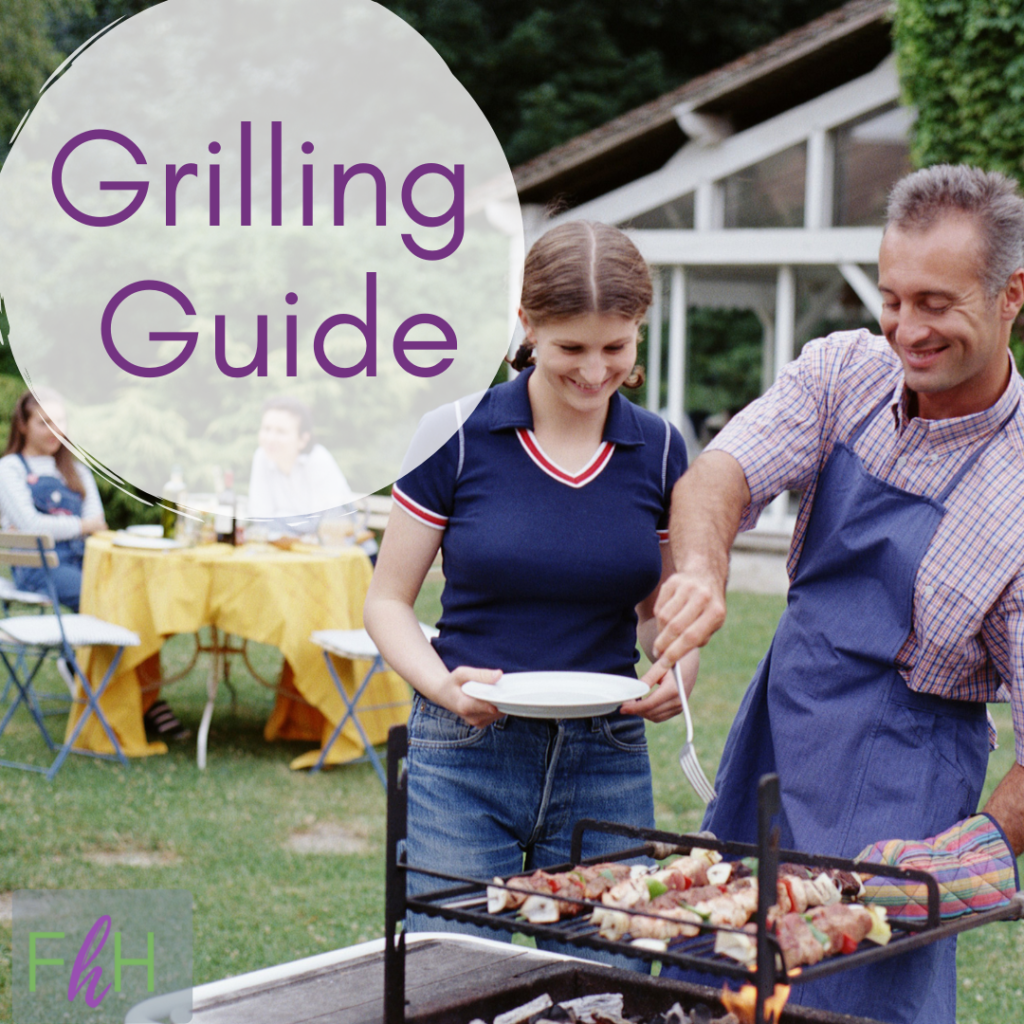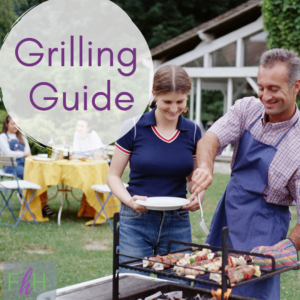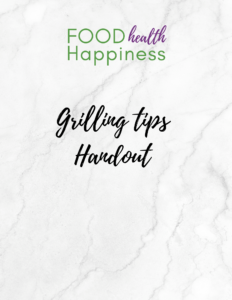Tips for Healthy Grilling


Pick your Protein
- Choose fish, skinless chicken breast, and leaner cuts of meat to avoid excess fat, which can cause flames and smoke.
- The recommended serving size of animal protein is about 6 ounces. Divide or cut your proteins into serving sizes before placing them on the grill.
- For grilling larger cuts of animal proteins, you can pre-cook them by gently baking them in the oven to reduce the time the meat is exposed to the grill’s direct heat.
- Plant proteins, like firm tofu and plant-based burger replacements, tend to be lower in fat than animal proteins, so make sure you grill them on a well-greased grate.
Avoid Smoke and Fire
- Exposing animal proteins to high heat and open flames can create chemicals that have been linked to an increased risk of certain cancers.
- How to reduce the development of these compounds:
- Line the grill with foil that has holes
- Cook for longer at a lower temperature
- Have a spray bottle on hand filled with water to control fatty flare-ups
- Remove the extra fat on meat or buy skinless proteins to reduce the flare-ups and charring.
- Cook your meat in the center of the grill and flip frequently
- Grill meat gently, then finish in the oven to reach a safe internal temperature.
Use Rubs and Marinades
- Studies suggest that using marinades on meat prior to grilling can limit the formation of potential carcinogens.
- Rubbing spices or homemade marinades can add flavor without too much sodium often found in store-bought products.
- Keep it simple by not drowning your grilled meats and veggies in salty sauces, sugary condiments, or fatty dressings.
Don’t Forget the Fruits and Vegetables
All veggies and fruits can be grilled, in fact, grilling tends to intensify the flavor of fruits and veggies. This is a great way to add color to any backyard BBQ party!
Here are some great ways to incorporate fruit and veggies:
- Place veggies in tinfoil or brush with a little olive oil, so they do not stick to the grill.
- Make kebobs with peppers and onion by alternating with a protein like chicken or shrimp.
- Swap the meat altogether by using eggplant cutlets, portabella mushroom steaks, or making some veggies burgers.
- Switch up traditional sides of baked beans or potato salad with fruit salad, a three-bean salad, or a simple leafy green salad.
- Grill fruits for your dessert, such as pears, apples, and pineapple. Fruits tend to carmelize well in high heat, which makes them taste extra sweet, perfect for an easy dessert.
- Try to incorporate whole grains either as a side dish, such as a quinoa salad or whole-grain buns and bread.
Food Safety
- Keep raw meat, poultry, and seafood separate from vegetables and other foods.
- Remember never to reuse a marinade or rub after raw meat has already touched it.
- Place grilled foods on clean plates rather than on the ones that held them when they were raw.
- Use a food thermometer to check the internal temperature of grilled meat, seafood, and poultry.
Check the temperature before eating:
- Ground beef, pork, veal, lamb = 160° F
- Steak, chops, roasts = 145° F – Let rest for at least 3 minutes
- Chicken & Turkey = 165° F
- Fish & Shellfish = 145° F
- Leftovers = 165° F
Keep it Clean
- Use a wire brush to give your grill a nice clean, and wipe it down with a cloth to avoid grill-cleaning bristles.
- Scrub down the rack or grill pan after each use.
- Remove leftover burnt pieces of food on the grill to prevent any burning or smoking.

